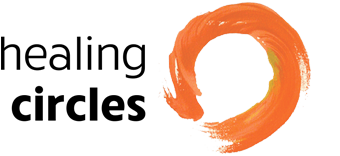What’s the difference between a circle host and a professional counselor/therapist?
| Circle host | Professional counselor/therapist |
| Speaks into the center | Addresses client directly |
| Primary responsibility is to provide a safe container by paying attention to process | Draws on professional training, expertise and experience |
| Follows circle agreements | Is bound by professional ethical standards |
| Asks clarifying questions, provides empathy and referrals only when requested | May provide interpretation and guidance |
| Is free to speak from personal experience | Needs to maintain professional boundaries and distance |
| Manages expectations, e.g. articulates purpose of the circle: social-emotional support, not therapy | Clarifies and articulates to client what therapy means their professional framework |
| Consciously takes professional hat off | Consciously puts professional hat on |
| Encourages and models heart-sharing | Asks poignant, probing and often analytical questions |
| Refrains from interpretations | Gives feedback, interprets |
| Consciously delineates difference between social-emotional support and shares information only when that has been requested- careful to not fix and advise | Makes professional judgments about when to advise and when to move from process to sharing of content/information |
 Dropping in for a Cup of Tea and a Circle of Two
Dropping in for a Cup of Tea and a Circle of Two
As humans, we are happier and healthier if we have someone to talk to when we need it. For people who are newly diagnosed, grieving, at a turning point, or simply needing to connect, we offer circles of two at Healing Circles Langley. Our primary purpose is to listen and help people find their own voice.
At minimum, we can offer a hug, a cup of tea, and an attentive ear to whatever the day’s concern is—whether physical, emotional, mental, or spiritual. We aspire to both generous listening and open questioning, affirming strength when we hear it and supporting inner guidance as it emerges.
What’s most satisfying for me as a volunteer is just being there for people who walk through the front door. The social support I’ve personally received from Healing Circles has been ‘a life raft.’
Kitty Adams, Healing Circles Langley volunteer drop-in host
Our volunteers are trained in peer-to-peer co-counseling methods such as active listening and clear reflection. Circle hosts do not offer medical (or other) advice or therapy, but they can serve as a clearinghouse to assist people in finding additional community resources.
The same circle agreements apply: confidentiality; listening with compassion and curiosity; honoring each others’ respective paths; and pausing for a moment whenever necessary to catch our breath and bearings.
It’s not easy to turn to a stranger for help, but some of the pain that gives new people the courage to cross our threshold includes:
- “I’ve just been diagnosed with a life-altering illness.”
- “I’m overwhelmed by being a caregiver.”
- “I’ve just lost a loved one.”
- “I’m at a turning point in my life.”
- “I’m having a bad day, and I’m lonely.”
- “I’ve just moved to town and have no support network, and now I’ve been diagnosed with cancer.”
- “I don’t know why I’m here. I just needed to talk with someone.”
So far, our reach has not exceeded our grasp. We have enough volunteers to host circles of two three days a week, and in 95 percent of the circles that take place, our volunteers have felt comfortable in their role. We’ve enlisted the help of a team of crisis counselors who are willing to take a call and perhaps offer a complementary session for those with mental health issues. So far, we’ve had to call on their help only a few times.
We have additional volunteers experienced in working with those suffering from grief, pain, cancer, and aging, and we also direct people to other social organizations or therapists who could be of better assistance.
Circles of two are a beautiful way for generous spirits to volunteer at Healing Circles Langley. The program protects the integrity of our larger circles because we can use them to either match people with the best circle for them or invite them to continue to come to circles of two if that works better.
I feel that serving as a Healing Circles host is a privilege and a treat. Not a burden at all; it’s a gift. What a great feeling it is to hear visitors say as they’re leaving, “I’m so glad you were here.”
Linda diRienzo, Healing Circles Langley volunteer drop-in host
Diana Lindsay is a co-founder and co-director of Healing Circles Langley. She is the author of Something More Than Hope: Surviving Despite the Odds, Thriving Because of Them, the story of her recovery from stage IV lung cancer.
Header photo by David Welton


